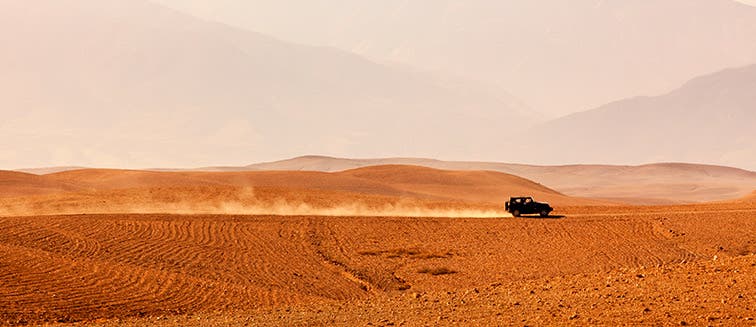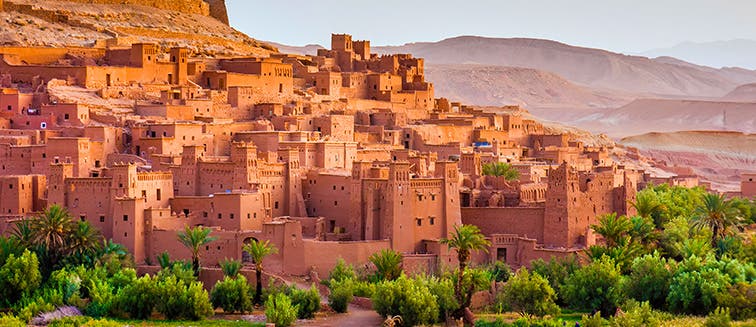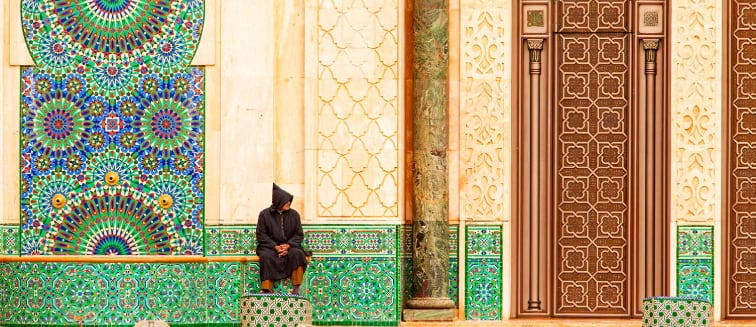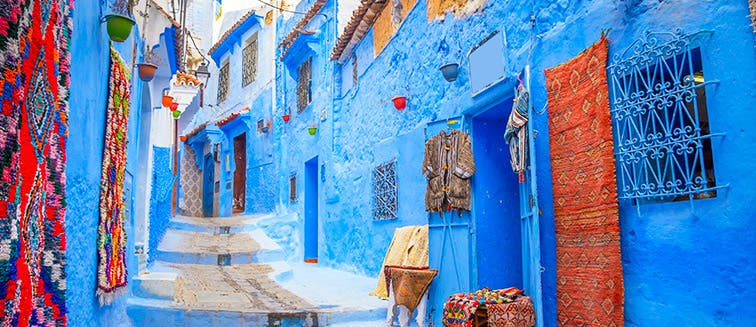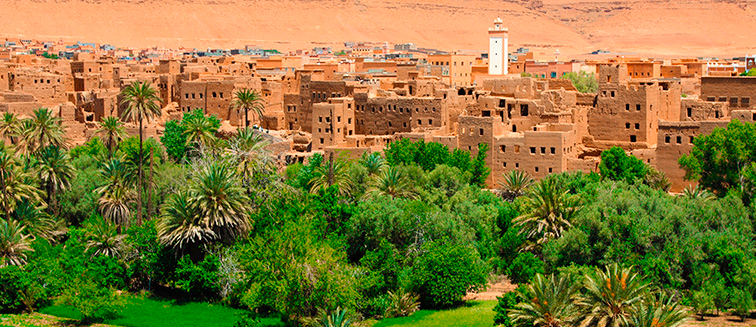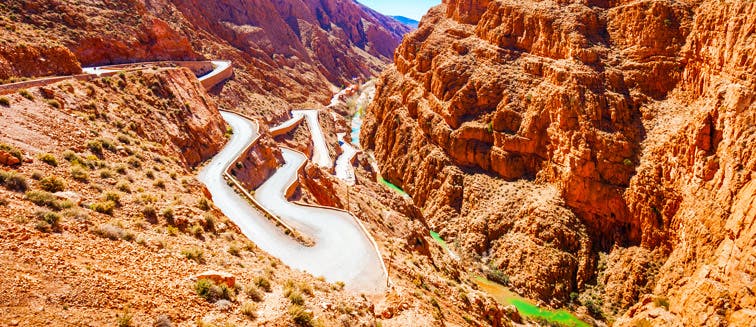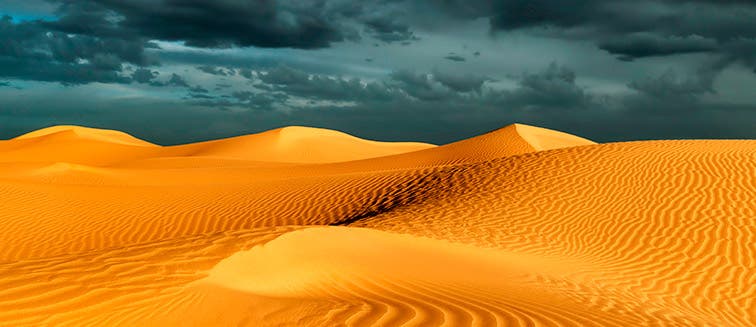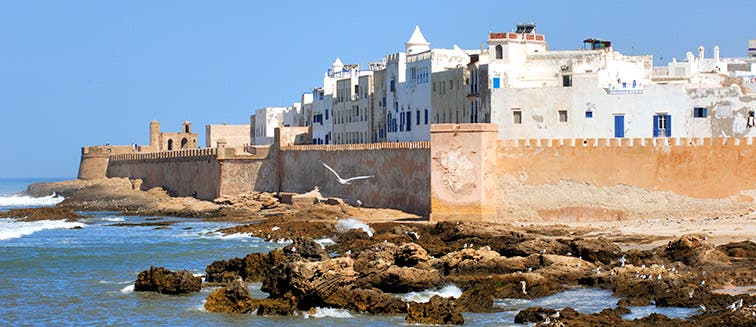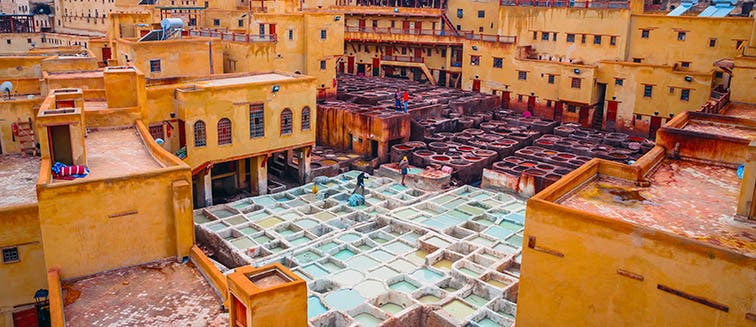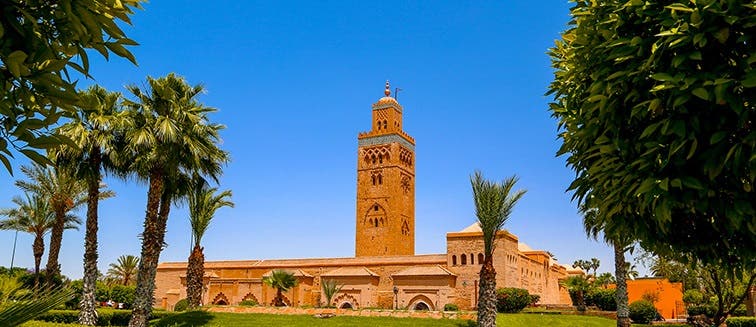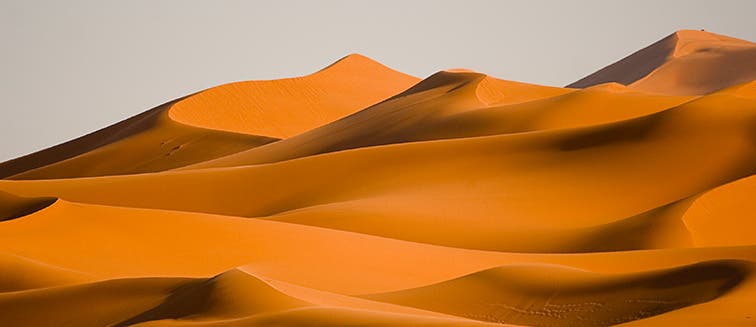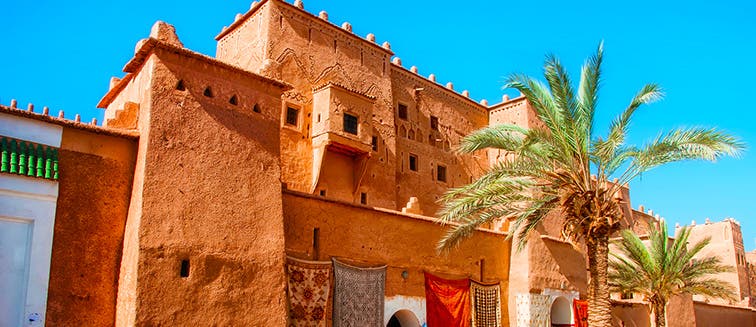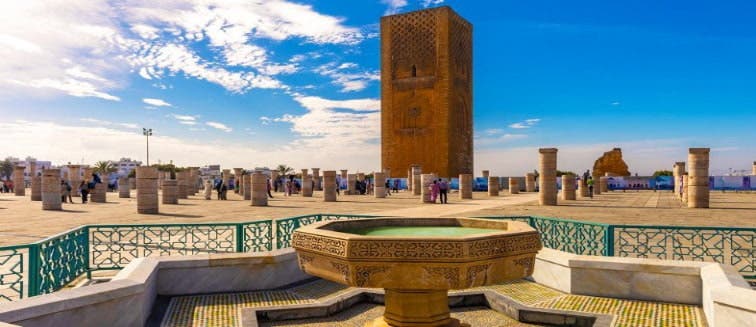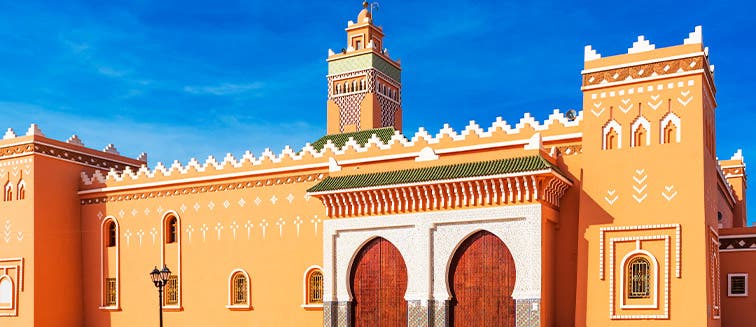Africa
Americas
Asia
Europe
Oceania
By Season
By Interest
By Group
Call us for free now
Book with an expert for free:
+44 20 8068 3176
Prefer us to call you? Drop your number in the box:
24 hours a day, 7 days a week
What to see in Morocco
Marrakesh
Tourist attractions Marrakesh
Step into the ‘Red City’, Morocco’s most popular destination, known for the winding alleys of its Medina and the non-stop hustle and bustle of its souks. Located in Western Morocco, Marrakesh is a former imperial city, sat in the foothills of the snow-capped Atlas Mountains. Arabic and French are the spoken languages in the city, the latter of which is a remnant of the French Protectorate in Morocco in the early 20th-century.
A trip to Marrakesh can feel like a whirlwind for the senses, as you venture through the busy souks, contend with the amazing volume of traffic, comprised largely of both motorbikes and donkeys, and take in the vibrant atmosphere. Luckily, the city offers plenty of opportunities to unwind after a busy day, from its numerous rooftop cafes and restaurants, often with fantastic panoramic views out across the city and mountains, to the plentiful riads, guesthouses built around an internal courtyard to ensure optimum tranquillity.
Marrakesh dates back to the Berber Empire and has been inhabited by Berbers since Neolithic times, but the city was officially founded in the 11th-century by the Almoravid Dynasty. It was in this period that the old city walls and various buildings inside were constructed in red sandstone, which has given the city its recognisable appearance and nickname. Marrakesh grew rapidly and established itself as the cultural, religious, and trading centre of Northwest Africa. The golden years of the Saadian Dynasty saw the establishment of many elaborate palaces and monuments in the city, such as the Badi Palace and the wealthy sultans are buried in the richly embellished Saadian Tombs, a major attraction for visitors on a tour of Marrakesh.
With a rich and diverse history, the city acts as a living museum, as around every corner there is an insight into the traditions and culture that shaped this immersive city. Standing in the Jemma el-Fnaa Square, the busiest square in Africa, you may well find you don’t know what to look at first; the bustling stalls, the folk dance performances or the towering Koutoubia Mosque!
Highlights of Marrakesh
A holiday to Marrakesh is incomplete without visiting at least some of the city’s major attractions. A good place to start is the Jemma el-Fnaa Square, where you can enjoy eye-opening displays from snake-charmers, folk dancers and Berber musicians, all the while sampling the local cuisine, most notably the Moroccan tagines on offer at the numerous food stalls that spring up every evening as night falls on the city. Your senses will be ignited by the energy of Africa’s busiest square and the sheer volume of sights and sounds, so if you’d rather watch the spectacle from afar, there is a huge choice of rooftop restaurants and bars overlooking the square. If you are lucky enough to be in the square on a Friday afternoon, you might well witness huge groups of Muslim devotees taking part in Friday prayers, whilst religious teachings sound from loudspeakers and echo around the square.
Many visitors who travel to Marrakesh are excited to explore the labyrinthine Medina souks, an unmissable experience for anyone looking to immerse themselves in the local culture. From shops selling clothes and handbags to the more authentic spice sellers and the ‘black magic’ souk, selling weird and wonderful mixtures and potions, the souks of Marrakesh are out of this world.
It is almost impossible to avoid getting a little lost, as the winding alleyways often seem to lead you back to where you started, as you pass by artisans working with metal or weaving baskets and busy food sellers providing hearty lunches for long ques of local shop owners. Except for a small number of tourist-centric shops, bartering is to be expected when you attempt to buy an item, so you can often secure great bargains whilst shopping in the souks.
Outside of the walled Medina, lies the new town, known as Gueliz, and it is here that you can find the popular Jardin Majorelle, perhaps one of Marrakesh’s most photographed locations! Situated next to the Yves Saint Laurent Museum, and with the option to buy a combined ticket to both, the Jardin Majorelle is a shady oasis amidst the flamboyant chaos of the city. These gardens belonged to the famous artist Jacques Majorelle and are a tropical paradise of exotic plants, a shady bamboo lined walkway and numerous water features and fountains. The centrepiece of the garden is the iconic electric blue building, which houses the Berber Museum, filled with artefacts and jewellery. Those looking to spend a day in tranquil surroundings during a trip to Marrakesh would be wise to choose a visit to these fabulous gardens.
The most characteristic structure of Marrakesh’s skyline is undoubtedly the Koutoubia Mosque, its minaret stretching 77 metres into the sky, making it the tallest building in the Medina, as building above this height it outlawed in order to retain the prominence of the mosque. Built in the 12th-century, the Koutoubia stands out for the intricate blue tiling of its minaret and the gilded copper balls of its spire. Although non-Muslims cannot enter the mosque, they can admire it from the lush gardens that surround the building and hear the live call of prayer which sounds at regular intervals from its minaret.
A tour of Marrakesh would not be complete without visiting the majestic Bahia Palace, another of the city’s most picturesque sights, renowned for its colourful tiling and decorated rooms. This 19th-century palace complex was built for the Grand Vizier of the Sultan, who used it as his residence and for entertaining Moroccan nobility. The gardens and palace buildings perfectly capture the essence of both Islamic and Moroccan style, with decorative wood-carved bas reliefs, mosaic work and decorative columns. A visit to the Bahia Palace invites you to step back in time to the days of the Sultan and to imagine yourself relaxing in the courtyard, sipping refreshing mint tea.
































